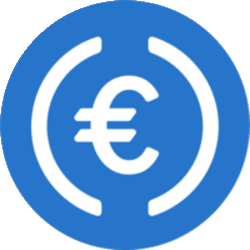Visa has expanded its stablecoin settlement platform by integrating Stellar and Avalanche blockchains along with three new stablecoins, including the newly approved USDG in Europe, to enable faster and more flexible cross-border digital payments.
-
Visa now supports four blockchains: Ethereum, Solana, Stellar, and Avalanche.
-
Three new stablecoins added: PayPal USD (PYUSD), Global Dollar (USDG), and euro-backed EURC.
-
The expansion advances Visa’s strategy to build a multi-chain, multi-currency foundation for interoperable global payments.
Visa expands stablecoin settlement with Stellar, Avalanche, and new stablecoins including USDG, enhancing global payment speed and flexibility.
How Has Visa Expanded Its Stablecoin Settlement Platform?
Visa has broadened its stablecoin settlement platform by adding support for two additional blockchains, Stellar (XLM) and Avalanche (AVAX), alongside Ethereum and Solana. This expansion now enables settlement across four major blockchain networks, enhancing transaction speed and interoperability. Additionally, Visa incorporated three new stablecoins: PayPal USD (PYUSD), Global Dollar (USDG), and the euro-backed EURC, enabling multi-currency settlements.
What Is the Significance of Adding USDG and EURC Stablecoins?
The inclusion of USDG, recently approved under the European Union’s MiCA regulatory framework, marks a significant milestone for Visa’s European operations. EURC, a euro-backed stablecoin issued by Circle, further supports Visa’s multi-currency settlement ambitions. These additions allow Visa to facilitate settlements not only in U.S. dollars but also in euros, broadening the scope for cross-border digital payments and enhancing regulatory compliance.
Why Is Visa Focusing on Multi-Chain and Multi-Currency Solutions?
Visa’s strategy centers on building a multi-chain, multi-currency foundation to meet diverse partner needs worldwide. According to Rubail Birwadker, Visa’s Global Head of Growth Products and Strategic Partnerships, trusted, scalable, and interoperable stablecoins can fundamentally transform global money movement. This approach supports faster, more flexible payments and aligns with growing fintech and banking interest in stablecoin-based cross-border transactions.
How Does This Expansion Impact the Future of Digital Payments?
By integrating multiple blockchains and stablecoins, Visa is positioning itself at the forefront of digital payment innovation. The platform’s enhanced interoperability and currency support reduce friction in cross-border settlements, potentially lowering costs and increasing transaction speed. Visa’s ongoing development of tokenization platforms further empowers financial institutions to issue their own tokens, signaling a broader shift toward blockchain-based payment infrastructures.
Visa has expanded its stablecoin settlement platform by adding two new blockchains and three stablecoins, including the newly approved USDG in Europe, to support faster and more flexible digital payments.
- Visa now supports four blockchains: Ethereum, Solana, Stellar, and Avalanche.
- Three new stablecoins added: PayPal USD (PYUSD), Global Dollar (USDG), and euro-backed EURC.
- The expansion supports Visa’s strategy to build a multi-chain, multi-currency foundation for interoperable global payments.
Visa has expanded its stablecoin settlement platform, adding support for two additional blockchains and three new stablecoins.
The global payments firm has now integrated Stellar (XLM) and Avalanche (AVAX) alongside its existing support for Ethereum (ETH) and Solana (SOL), bringing the total number of supported networks to four.
On the stablecoin front, PayPal USD (PYUSD) and Global Dollar (USDG) have been added via a partnership with blockchain infrastructure provider Paxos. Visa has also introduced support for EURC, a euro-backed stablecoin issued by Circle, enabling settlement in both U.S. dollars and euros.
Notably, the addition of USDG comes just weeks after Paxos officially launched the stablecoin in the European Union under the region’s new MiCA regulatory framework.
“Visa is building a multi-coin and multi-chain foundation to help meet the needs of our partners worldwide,” said Rubail Birwadker, Global Head of Growth Products and Strategic Partnerships, Visa. “We believe that when stablecoins are trusted, scalable and interoperable, they can fundamentally transform how money moves around the world.”
The update arrives amid growing interest in stablecoins from payment providers, fintech firms, and banks aiming to streamline cross-border transactions. Visa entered the stablecoin arena early, initiating settlement experiments with USD Coin (USDC) in 2020. In 2024, the payments giant launched a tokenization platform designed to help financial institutions issue their own tokens and stablecoins.
| Blockchain Network | Supported Stablecoins | Launch Year |
|---|---|---|
| Ethereum (ETH) | USDC, PYUSD | 2020 |
| Solana (SOL) | USDC | 2021 |
| Stellar (XLM) | USDG | 2024 |
| Avalanche (AVAX) | EURC | 2024 |
Frequently Asked Questions
What blockchains are integrated into Visa’s stablecoin platform?
Visa’s stablecoin settlement platform integrates Ethereum, Solana, Stellar, and Avalanche blockchains, supporting multi-chain interoperability for global payments.
How does Visa’s addition of new stablecoins affect cross-border payments?
By adding PYUSD, USDG, and EURC stablecoins, Visa enables faster, more flexible cross-border settlements in multiple currencies, improving payment efficiency worldwide.
Key Takeaways
- Multi-Chain Support: Visa now supports four blockchains, enhancing payment interoperability.
- New Stablecoins: PYUSD, USDG, and EURC expand currency options for settlements.
- Strategic Growth: Visa’s platform advances global digital payment efficiency and regulatory compliance.
Conclusion
Visa’s expansion of its stablecoin settlement platform with Stellar and Avalanche blockchains and three new stablecoins including USDG reflects its commitment to building a scalable, multi-currency payment infrastructure. This development enhances cross-border payment speed and flexibility, positioning Visa as a leader in blockchain-enabled financial services. Continued innovation in this space promises to reshape global digital payments.
